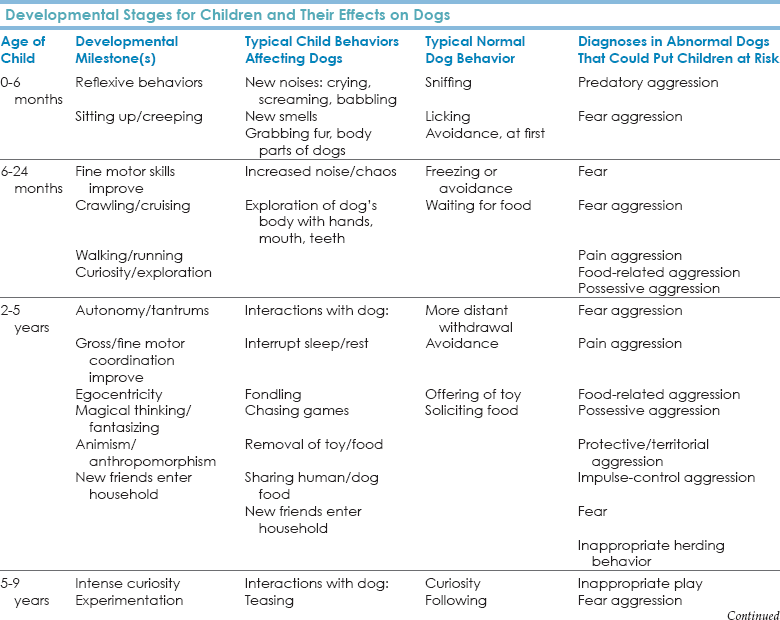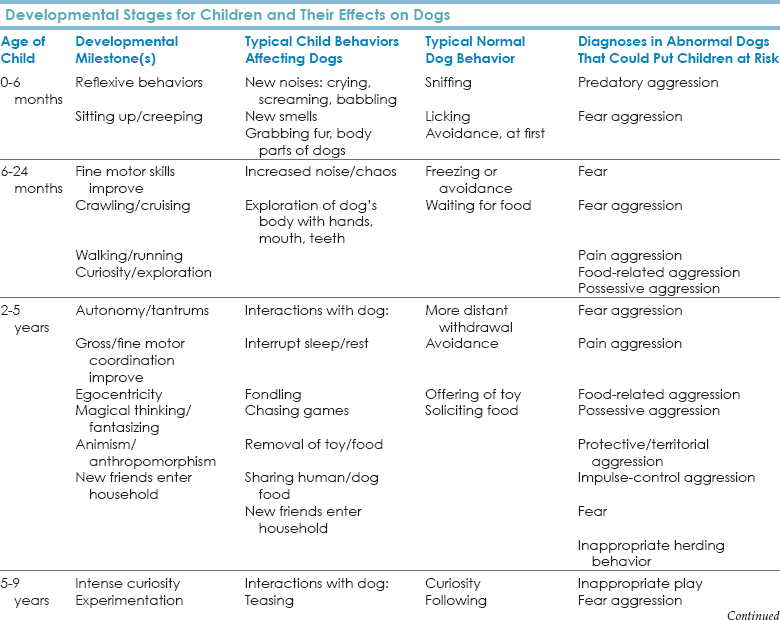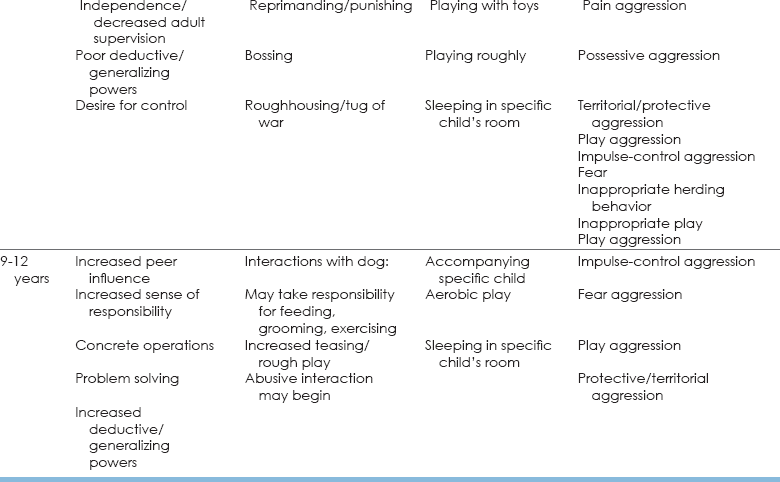Chapter 6 The vast majority of problematic behaviors and true behavioral pathologies are rooted in anxiety and the neurochemical/neurophysiological response to that anxiety (see Box 2-1 in Chapter 2 for the non-specific signs of anxiety). For ease of use of this manual, behavioral conditions affecting dogs are divided into two groups: diagnoses involving aggression and diagnoses not involving aggression. Diagnosis and treatment of canine aggression remain controversial, often volatile, issues; however, most dogs can improve with treatment. The roles for terminology, mechanism, and reactivity are discussed and graphically illustrated in Chapter 2 and are applicable when discussing canine pathologies. Early diagnosis and treatment can make the difference between life and death for dogs affected by these conditions and between living in a safe environment or one replete with risk. Aggression is best defined within a given context as an appropriate or inappropriate threat or challenge that is ultimately resolved by combat or deference. This broad definition encompasses the standard definition of agonistic behavior and is consistent with definitions of terms involving types of hierarchies affected by limited resources (Immelmann and Beer, 1989). • A dog who attacks visiting friends as they hug their hosts is responding inappropriately and out of context. • Dogs who defend their people from rape, theft, attack, or attempted murder are considered heroes regardless of whether they do so by merely being present, by inflicting an element of fear and surprise regardless of their behavior, by growling, by baring their teeth, or by biting. This form of aggression is usually considered to be appropriate, and in context. We prefer that the aggression is proportional to the threat posed, which is interesting because such a preference relies on the dog’s ability to make fine, contextual decisions. Dogs are cognitive, but dogs who are anxious, by definition, may not be able to make these distinctions. • When trying to decide whether an aggression was appropriate, given the context, or inappropriate and out of context, it helps to remember that normal behaviors are variable and flexible; pathological behaviors are inflexible and relatively stereotypic. • The term “provocation” must be discussed in the context of a dog known to be aggressive in certain circumstances compared with a dog that has never reacted in those circumstances. If a dog is known to have a propensity to behave inappropriately in certain contexts (i.e., petting or reaching over its head), she may be “unintentionally provoked” (sensu Podberscek and Blackshaw, 1991a) by what would otherwise be considered a normal gesture. For abnormal animals, “normal” gestures will not be “normally” perceived. Dogs exhibiting inappropriate, out-of-context aggressions are not misbehaved or poorly behaved—they are clinically abnormal and must be regarded as such. • For any dog exhibiting any potentially aggressive behavior or when clients complain about any aggressive or potentially aggressive behavior, the following must be determined. • Dogs who bark or growl can be potentially as dangerous as dogs who bite, but some idea of the extent to which the dog has been able to inhibit itself can be obtained from the dog’s reactions. A dog who never reacts in a given context—and who has been exposed to it—probably does not have a problem with that context. This is not a guarantee that no problem could develop in the future, but such information provides a reference point for when the dog was last problematic. This is why screening each patient, at each visit, for behavioral problems and concerns is so important. • Reactivity of the dog can be determined from the dog’s behaviors (Boxes 6-1 and 6-2). Barking can be an alerting behavior. Snarling or lip lifting (usually silent at first), growling, and snapping or biting represent increasing levels of aggression. Body posture usually parallels vocal behaviors: lying down is a less reactive posture than sitting, which is a less reactive posture than standing. This does not mean that a dog who is lying down cannot bite. It does mean that the dog who is lying down must proceed through more behavioral sequences before he or she is in the position to bite, giving another individual more time to react or to anticipate a problem. • No one should be misled by the myth of the “tail-wagging dog”; a wagging tail is only an indication of willingness to interact—not of the tone of the interaction. A dog that is standing rigid, hair up, ears back, barking, growling, baring its teeth, and wagging its tail will be very willing to interact in an extremely aggressive manner, given the appropriate cue or stimulus. • By definition, a first bite means that the dog has never bitten before; it does not mean that there have been no aggressive events or that the dog cannot or will not bite in the future. • Whether dogs bite may be a threshold issue: completely normal dogs can bite if the threshold is sufficiently lowered (e.g., abuse of or threats to them or their people). • Aggressive dogs should not be described as “vicious.” Viciousness connotes an underlying state involving retribution that cannot be evaluated in dogs. Aggressive dogs can be determined to be “dangerous,” which is a more useful distinction. • There is a substantially greater injury and fatality rate for children compared with adults. • Boys are injured and killed more often than girls, indicating that human behavior may be a major factor. • There is a preponderance of owned family dogs involved in bites and fatalities. The data on dog bites have been dominated by catastrophic bites as defined by those attended in an emergency setting. The vast majority of fatal dog bites are to older, debilitated adults and very young children. See Overall and Love (2001) and Patronek and Slavinski (2009) for detailed reviews of the data and the study statistics. A careful reading of the literature supports three conclusions regarding breed: • Breeds most represented in dog bite data vary over time (which may indicate changes in breed preference by owners rather than changes in breed-specific aggressive tendencies per se). • Breeds most often represented in published data are popular ones, and no single breed may be represented in bite data in proportion to its actual population. • “Pit bull” is often applied, without biological basis, to a range of dog types, regardless of the underlying genetic stock (this problem may be magnified in communities that have experienced a previously publicized pit bull–type dog attack) (Lockwood and Rindy, 1987; Sacks et al., 1989). We lack excellent data on dog bites that would be useful for most clients because we lack databases of registered dogs and owners and data on the relative population numbers of different breeds (Collier, 2006; Overall and Love, 2001; Patronek and Slavinski, 2009). Without these data, we cannot calculate a breed-by-breed bite-related index, which has been so useful in understanding Dutch dog bites (Cornelissen and Hopster, 2010), or the population attributable fraction percentage for each breed, which would provide a more accurate bite frequency assessment. Cornelissen and Hopster (2010) examined all bites, not just catastrophic ones. Their findings parallel the generalities in the literature. • First, and in keeping with other studies, male humans are more frequently bitten by dogs than females, and children are bitten more frequently than adults. However, in more recent studies (Shuler et al., 2008), boys were not bitten more often than girls, an odd victory for gender equality that may hint at how children’s play styles have changed over the years. • Second, children were bitten in non-public places more often than adults and were bitten intentionally more often than adults. These findings strongly suggest that the risk to children from dog bites is a correlate of responsible adult oversight. • Third, although showing the global pattern of experiencing more bites to the head and face, children in this study had no or more minor injuries than adults, an uncommon finding in the literature. This pattern may suggest that some population-level (probably cultural) differences exist between these populations and those in the literature, which is heavily biased to studies on dogs in the United States. • Fourth, 60% of people bitten could identify a trigger that resulted in the bite. This means that we can educate people about triggers, what they mean to the dog, and how to respect the dog’s perception of the situation and prevent accidents. • Fifth, most people could readily identify the biting dog’s breed using a chart of breeds and breed characteristics that the authors provided, but no single breed was over-represented in the pool of dogs that did the biting. The breeds that were most common were the ones most likely to have bitten. These findings support the data of a number of comparative (Overall and Love, 2001) and original (Drobatz and Smith, 2003; Shuler et al., 2008) studies. Simply put, controlling breeds is not sufficient to control dog bites. Situations in which bites occur need to be thoroughly, rigorously, and consistently reviewed and documented by health care personnel, using validated assessment tools. The appropriateness of the situation, the extent to which a bite is provoked, the nature of the provocation, and the behavioral tendencies of the dog involved (including whether the dog has received a behavioral diagnosis involving aggression) must be evaluated (de Keuster et al., 2006). This aspect is particularly important given the association between dog abuse and child abuse and the extent to which violent behaviors are learned and practiced (Felthous and Kellert, 1987). The specialist community has not been willing to engage in creating a consensus terminology in veterinary behavioral medicine, despite numerous attempts to encourage this (Overall, 2005; Overall and Burghardt, 2006). As a result, data on dog bites and associations with diagnoses involving aggression have not been collected in a manner that allows for comparative studies. Unfortunately, this situation has tacitly encouraged an approach of categorizing aggression by the victim such that we understand even less about underlying mechanisms than would be the case using the types of mechanistic diagnoses defined in this text (Duffy et al., 2008; Segurson et al., 2005; Takeuchi et al., 2001; van den Berg et al., 2010). Only when we can share accurate diagnostic information can specialists develop a cohesive approach to understanding and treating the mechanisms underlying pathology. Selection, natural or artificial, cannot act if there is no underlying genetic variation. Some variation (termed “additive genetic variance” by quantitative geneticists) must be present for a trait to be developed. This is easy to understand with physical traits such as coat color but is harder to see with behavioral traits such as “protectiveness.” “Protectiveness” is actually a constellation of behaviors: watching, following, guarding, and reacting to keep one group separate from another when needed. Breeding for traits that are this complex and variable produces a continuum of protective behaviors, some of which may not be desired or expected. Some of these behaviors will be inappropriate because they are not complete or forceful enough, and some will be unacceptable because they are too forceful and out of context (Figs. 6-1 through 6-3). If breeders of dogs prefer more forceful behavior and do not care whether it is appropriate or in context, it is very likely that within a few generations, the distribution of protective dog behaviors will look like that in Figure 6-2, in which case more dogs behave inappropriately. The chance of someone encountering an inappropriately behaved member of this breed increases. However, if breeders act responsibly and choose to breed only dogs that have behaviors that are considered “optimal,” the proportion of appropriately behaved dogs increases; over time, the genetic variation may decrease, which may help to reduce the probability of undesirable traits appearing. Fig. 6-1 Graph A represents the hypothetical distribution of behavioral phenotypes for a random breed. The individuals in the blue area of this curve are considered too shy to perform the task for which the breed was developed or are too shy to be desirous as pets. The individuals in the orange area of this curve are considered too fierce to perform the task for which the breed was developed or are too fierce to be desirous as pets. Selection has limited the spread of the less desirable population members by not breeding them, and in this example breeding of unaffected members maintains the represented distribution. Graph B shows what happens, all other forces being unchanged, if selection is relaxed or breeding is uncritical, and the undesirable members are included or encouraged in the breeding population. The relative proportion of dogs with both undesirable phenotypes of behaviors increases. Fig. 6-2 Graph A is the same as graph A in Figure 6-1 and is originally maintained in the same way. Graph B represents what happens when the unacceptably fierce animals are preferred, and selection acts to reinforce this through preferential breeding and culling of unacceptably shy animals. The relative proportion of the unacceptably fierce phenotype of dog increases. Fig. 6-3 Graph A shows a distribution similar to graph A in Figure 6-1 and is originally maintained in the same way. In this case, the original mean represents the mean phenotype of the selected behavior in the breeders’ populations. The line marked preferred optimum represents the phenotype of the behaviors that breeders prefer and have selected for by breeding only dogs that have phenotypes close to it. Graph B indicates what happens after more than 20 generations of breeding for the preferred optimum. In this case, the mean of the behavioral phenotypes in the population has shifted to the preferred optimum, and as a result, the proportion of dogs with the undesirable behavioral phenotype of unacceptably shy has decreased to nil, whereas the proportion of dogs with the undesirable behavioral phenotype of unacceptably fierce has increased, along with an increase in the proportion of dogs with the highly desirable optimum phenotype. Caution is urged regarding any generalizations about inappropriate breed-based behaviors. Breeds selected for one or a few particular and specific behaviors may be more at risk for developing undesirable variation for those behaviors, and when dogs of a certain breed develop a behavioral pathology, that pathology is informed by breed (Overall and Dunham, 2002). This does not mean that dogs selected for protective behaviors are more aggressive than dogs for which this selective pressure was absent. It does mean that that particular breeds may be more at risk for developing a disproportionate number of dogs who exhibit inappropriate, out-of-context protective aggression given the selection/breeding conditions outlined previously. Regardless, the following should be understood by anyone who interacts with dogs. • Any dog, regardless of breed, can exhibit inappropriate behavior. • Any dog can bite, and the vast majority could likely be pushed to do so under some awful circumstance. • If there is a bite or collision, dogs who are large, muscular, tenacious, and who have powerful jaws will do more damage—even by accident—than dogs who do not have these attributes. • The data on hormonal contributions to canine aggression are not strong, and all are correlational. • Un-neutered male dogs who bite tend also to be un-licensed and un-vaccinated, suggesting that the pattern may reflect human responsibility, not biology. • Castration has been reported to decrease aggression to other dogs in 62% of cases (Hopkins et al., 1976), but there are no data on true effects on problematic behaviors or specific diagnoses. In general, testosterone acts as a behavior modulator that allows dogs to react more quickly and intensely and for a prolonged period of time. Clients should be told this. • For females, there is evidence that for dogs younger than 6 months of age who are already exhibiting signs of “dominance”/impulse-control aggression, ovariohysterectomy renders them more aggressive (O’Farrell and Peachey, 1990; statistical analysis in Overall, 1995c). In utero androgenization is a concern for many species but remains largely un-investigated in dogs (Compaan et al., 1993; Vandenbergh, 1971). One study (Kim et al., 2006) compared incidence of “aggression” in neutered female working dogs and dogs who were anesthetized but not neutered. The neutered dogs were more reactive/“aggressive” in some circumstances, but because no sham surgeries were used, as is the routine in rodent studies, the effect may have been attributable to surgery/recovery. This is not a trivial issue given roles for altered mental states associated with anesthesia, pain, learning, and inflammation. • What should veterinarians recommend with respect to neutering for dogs showing some aggression? For hands-on, gut-level learning for children (the group of people most likely to be victimized by inter-specific misunderstanding), it would be difficult to outperform the lessons taught in the Blue Dog CD (de Keuster et al., 2005). In this clear interactive video, children (and their caregivers) are able to try out their behavioral responses on a virtual dog and learn about what could happen with a real one. Scientific validation of the beneficial effects of this program continues, with early studies showing that the Blue Dog video reduces errors made by children 3 to 6 years old with respect to their responses to dogs’ behaviors (Meints and de Keuster, 2009). That said, we should understand that until children are 8 to 12 years old, what they cognitively know and can recite may be somewhat divorced from what they do when the circumstance arises. Practicing behaviors can help teach responses but cannot override neurodevelopment. Until children’s brains are sufficiently mature to act rationally on material that they have mastered, their caregivers need to show responsible oversight. Table 6-1 explains the neurodevelopmental stages of children and their effects on dogs. Caregivers and other adult observers also need to be aware that not all children treat animals kindly or fairly. Table 6-2 lists canine behaviors that may indicate that the dog is distressed because of the child. Refer also to Table 6-3 for assessing damage done during aggressive events. TABLE 6-2 Warning Signs in Dogs That Can Indicate Distress Associated with Children • Acute change in a dog’s normal behavior (e.g., withdrawal or increased circling and patrol behavior; changes in amount or character of vocalization) • Change in eating habits, particularly if dog will eat only when the child is absent or if the dog suddenly shows food-guarding • Increased reactivity of pet (e.g., barking, growling, patrolling, lunging in new or lesser circumstances) • Changes in sleeping/resting activity and locations • Changes in behaviors associated with behavioral diagnosis and increase in or appearance of gastrointestinal signs (vomiting, regurgitation, diarrhea) associated with stress • Signs of separation anxiety only when left with children (e.g., vocalization, destruction, elimination, salivation, increase or decrease in motor activity) • Frank aggression—even without a specific diagnosis—in the presence of children From Love and Overall, 2001. TABLE 6-3 Assessing Damage Done during Aggressive Events Adapted from Association of Professional Dog Trainers website (www.apdt.com): Dr. Ian Dunbar’s dog bite scale. An assessment of the severity of biting problems based on an objective evaluation of wound pathology. www.apdt.com/veterinary/assets/pdf/Ian Dunbar Dog Bite Scale.pdf. Accessed August 3, 2011; and Wrubel KM, Moon-Fanelli A, Maranda LS, Dodman NH. Interdog household aggression: 38 cases (2006-2007). J Am Vet Med Assoc 2011;238:731-740. A growing number of resources are available that should help even the most clueless among us to understand canine signaling—if we read the signals. The best references address the point of view most often neglected—the dog’s. Two short popular books should heighten the interest of most veterinarians and dog lovers. Tail Talk (Collins, 2007) is a beautifully photographed, informative book that could have a home in the waiting rooms of all veterinary surgeries. The Canine Commandments (Shepherd, 2007) offers parents a translation of canine behavior and needs that will allow them to learn to meet their dog’s needs humanely and to understand that by doing so they will keep their children safe. When considering canine aggression, we must begin to ask what kind of people we wish to be. Cornelissen and Hopster (2010) hint at this in one laudatory statement: “We found that all dogs can bite and therefore one should always be careful when interacting with a dog, even a family dog and during play.” Behavioral Diagnoses Primarily Involving Pathological Aggression Diagnostic Criteria and Description: • Consistent aggression (threat/challenge/contest) directed toward people or other animals by a bitch who has puppies, is about to have puppies, or is experiencing pseudocyesis (false pregnancy). • Attacks are unprovoked by the approaching individual and may occur as a result of any near movement, not just that associated with an approach to the bitch or puppies. • Growling, snarling, lunging, and rarely biting in response to being approached by humans or other animals when “nesting.” • Most approaching individuals are able to avoid the bitch before she grabs them. • Some bitches will “nest” with and defend toys or blankets • Intensity of the threat is generally related to proximity of approacher: the closer the individual, the more intense the aggression. Etiology, Epidemiology, and Risk Groups: • This is a recurring condition for susceptible dogs and may appear at each heat or breeding. • If the dog is continually annoyed (from her perspective), she may injure, kill, or eat pups or destroy and consume blankets and toys. Clients should watch for signs of increasing reactivity on the part of the bitch and avoid stimuli associated with such reactivity. Common Myths That Can Get in the Way of Treatment or Diagnosis: • Although some inexperienced or worried dams may occasionally be uncertain, if the dog is reacting this way routinely, either she is overly/pathologically concerned or she is being continuously harassed by the focus of her aggression. Abuse and inappropriate treatment should be on the rule-out list. Commonly Asked Client Questions: • Will this happen if the dog is bred again? • If this aggression is associated with repeated pseudocyetic events, spaying the dog may be the most humane choice. No dog should be bred before 2 years of age, more than once a year, or more than four times in their lifetime. The health, welfare, and well-being of the bitch matter. • If the bitch is aggressive during more than one pregnancy, her quality of life (QoL) is suffering, and she should be spayed. • Provide a truly secure location for the bitch and her puppies. Nest boxes/whelping pens should protect the mother and pups and provide an unobstructed view of anyone who could approach. • Provide warning of an approach by talking to the dog. Anxiety worsens when dogs have incomplete information or must monitor the environment. Early warning can relieve related anxiety. • Quiet rooms or rooms with classical music or white noise and/or dimmed light may help some dogs, but there are no data. • Provocation of the dog can be avoided by cleaning bedding and providing food and fresh water when she is elsewhere. If the dog has learned to like walking on a leash, using the leash to take her for a walk without the pups may help her to re-evaluate her level of concern. • Restrict visitation to the dog. As the pups move in to week 3, they will begin to benefit from the ability to meet other dogs and other species. Encourage this. If the mother is still reactive by week 6, take her away to do something she can enjoy while the puppies learn to explore new social and physical environments. Her protective behaviors could restrict their interactions at a time when the pups can most benefit from exposure, and she could inadvertently injure the pups. • All dogs can benefit from learning to relax. If there is a known risk that this condition could occur, relaxation and deferential behaviors taught before pregnancy and used throughout nursing should help. • Medication/dietary intervention: • Although this condition likely has hormonal components, no interventions are recommended beyond spaying 2 months after the pseudocyetic event or after the pups are weaned. • Miscellaneous interventions: • Breeders should inform anyone who has a dog from this line about this concern. • An honest appraisal of any patterns in the pedigree will help determine whether the occurrence of this behavior in one pregnancy may be exceptional. Dogs from any pedigree with recurrences of maternal aggression would benefit from early genetic and behavioral counseling. Commonly Asked Client Questions: • Will this happen if the dog is bred again? • Clients must understand that the risk for this to recur is great. The condition has been known to occur in surviving female offspring. Few data exist, but a fatal version of this condition has been noted to occur in at least three generations of laboratory dogs. If the clients are vigilant, they may prevent injury to the pups, but we do not know if these puppies are otherwise affected by their odd early development or any potential co-morbid risks in utero. If the clients breed a surviving female offspring, they should disclose that this condition is in their line. • We do not understand this condition, but for the sake of everyone, spaying the bitch may be the most humane choice. • Are other puppies not related to this bitch at risk? • Prevent pregnancies, and early wean and hand-raise pups with the help of another adult dog (male or female) who likes puppies. • Medication/dietary intervention: • Miscellaneous interventions: • Breeders should query everyone who has a dog in this dog’s line and inform all interested parties of the results of the queries. • An honest appraisal of any patterns in the pedigree will help determine whether the occurrence of this behavior in one pregnancy may be exceptional. • Once it is known that this condition has appeared, efforts should be made to ensure no affected dog is mated, and clients with related dogs should be cautioned. • This condition is rare, but it is awful. • If this condition appears in a breeding colony, especially of working dogs, or in a family line, careful records, especially of the female lines, should be kept with respect to nutrition, vaccination history, overall medical and behavioral health, and behavioral and developmental landmarks. The sooner excellent records are kept, the sooner correlated deviations may be spotted. Diagnostic Criteria and Description: • Consistent, out-of-context aggression (threat/challenge/contest) that occurs in contexts in which play behaviors (play bows, yips, shoulder blocks, et cetera) would normally occur or where these would be relevant. • Play aggression is often most clearly seen in solicitation of play, but it involves actions that would actually discourage play (biting, pain). • Barking, grabbing, growling, jumping, and biting to get people to play and with increased intensity as play progresses. • Some growls may change in pitch and volume as a result of increased stimulation or in response to increased rough play by people. • A play growl can be distinguished from a serious one, and clients should be taught to discriminate. Play growls are usually high-pitched, short, and repeated frequently. True aggressive growls are lower pitched and prolonged. • Change in the tone of the growl may not always be present. • Changes in the pitch of the growl can happen too abruptly to detect safely. • Some dogs give other signals that they are becoming aggressive during play: the hair on the neck may go up, the ears may flatten, and the pupils may dilate. Etiology, Epidemiology, and Risk Groups: • Puppies who have been hand-reared may play differently than puppies reared with their parents and siblings. These dogs do not experience the real-time feedback that they would have received were they to injure family members, and so they may not inhibit behaviors well. • Some older puppies and young dogs exhibiting play aggression may never have learned to play appropriately. This condition may be the result of abandonment, lack of interaction in humane shelter or kennel/crate situations, or restricted access to other dogs in normal play situations. • The dog may never have learned to play appropriately because the clients proactively encourage rough play. No puppy or dog should ever be slapped about the face and head in the course of play or be offered a hand or arm to grab in play. Commonly Asked Client Questions: • How do I get my husband/son/boyfriend/father/et cetera to stop playing so roughly with the dog? • This diagnosis—and dog bites to children—are more common when human males are involved. Male humans play more roughly with dogs than females. The veterinary staff should acknowledge this and screen families for concern. • Most people who play roughly do not understand the risks to the dog. Clients need to understand the role for early learning and that dogs who bite are liability risks, could seriously injure someone, and could end up relinquished or euthanized. • Informed clients can accept that they must protect the dog and themselves and that they are responsible for helping the dog play in ways that are fun for everyone. • The normal, accepted, or contextual range of social play behaviors is well defined compared with abnormal, unacceptable, or out of context behaviors. The first step in managing interactions is to understand which ones are normal and which ones are not. Having the clients video themselves playing with the dog will indicate where the problem lies. • As a first step, instruct clients to play only with toys. Toys should be bigger than the dog’s head so that the dog can make a mistake and still not bite the human. • Once the dog takes the toy, it is acceptable to play tug if—and only if—the following safety rules are adhered to: • Modifying the behavior of the human will help modify the behavior of the dog. • People have little idea that puppies are fragile. • The vet staff should demonstrate appropriate toys and play techniques for all puppies and at any visits with young dogs who seem rough and/or whose people have scratches on their hands, forearms, legs, or face. • All play should take place only with toys. • Clients should be taught to play with the dog only in a manner that allows the client to control the intensity of the interaction. Done correctly, the dog is taught to take the cues as to the appropriateness of his or her behavior from the client. • Puppies need targets for full-on, rough and tumble play. The best targets are other puppies or adult dogs who like puppies and play and who are known to play appropriately. Play groups are wonderful ideas if the participants are well matched. • Medication/dietary intervention: • Some diets and supplements address the role for polyunsaturated fatty acids (e.g., docosahexaenoic acid [DHA] and eicosapentaenoic acid [EPA]) in retinal and neurological development (see Chapter 10). • Miscellaneous interventions: • Young dogs rescued from shelters may come to their new home with profound play aggression. Head collars and no-pull harnesses (e.g., Freedom Harness from Wiggles, Wags, and Whiskers; www.WigglesWagsWhiskers.com) can stop these dogs from jumping. Head collars (e.g., Blackdog Training Halter; www.blackdog.net.au) can stop these puppies from grabbing. Such tools must be used gently and humanely and in association with behavior modification that teaches the dog to sit, relax, and play appropriately with toys. • If the dog still needs a head collar to relinquish a toy in a few weeks, the behavior modification is not being done. • A humane, certified dog trainer, whom the veterinary staff have interviewed, seen work, and checked references and credentials, may be very helpful in teaching the clients play techniques suitable for their household. • Some dogs with play aggression hide and charge people to incite play.
Abnormal Canine Behaviors and Behavioral Pathologies Involving Aggression
Epidemiology and Outcome of Dog Bites, Risk, and Breed-Specific Legislation
Epidemiology of Dog Bites
Role of Human Selection in Dogs and Dog Breeds for Behaviors Such as Aggression
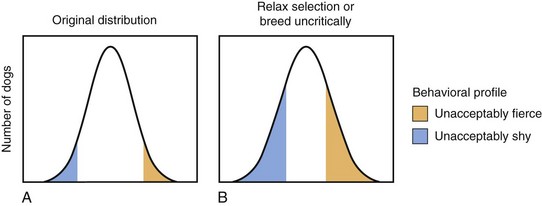
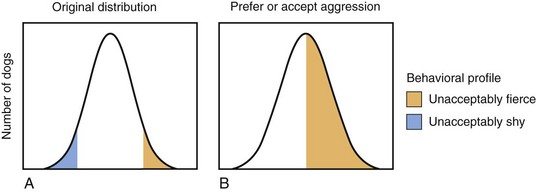
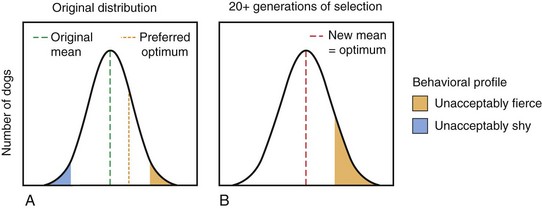
 If the patient is a young (<6 months) bitch puppy, she may benefit from one or two heat cycles, if the clients are responsible and she will not be bred. This means that any “protective” effect of early neutering on mammary neoplasia will be forfeit. The dog should also be engaged in active treatment for her behavioral concerns.
If the patient is a young (<6 months) bitch puppy, she may benefit from one or two heat cycles, if the clients are responsible and she will not be bred. This means that any “protective” effect of early neutering on mammary neoplasia will be forfeit. The dog should also be engaged in active treatment for her behavioral concerns.
 If the dog is male, neutering may diminish reactivity, but there is a huge learning component to any aggression. Clients should be realistic. The dog should also be engaged in active treatment for his behavioral concerns.
If the dog is male, neutering may diminish reactivity, but there is a huge learning component to any aggression. Clients should be realistic. The dog should also be engaged in active treatment for his behavioral concerns.
 No aggressive animal should be bred because we cannot rule out genetic contributions.
No aggressive animal should be bred because we cannot rule out genetic contributions.
 If the dogs are shelter puppies or dogs and we do not know their propensities, our focus is preventing unwanted puppies, and this concern should trump hormonal concerns of risk. Neuter the dogs.
If the dogs are shelter puppies or dogs and we do not know their propensities, our focus is preventing unwanted puppies, and this concern should trump hormonal concerns of risk. Neuter the dogs.
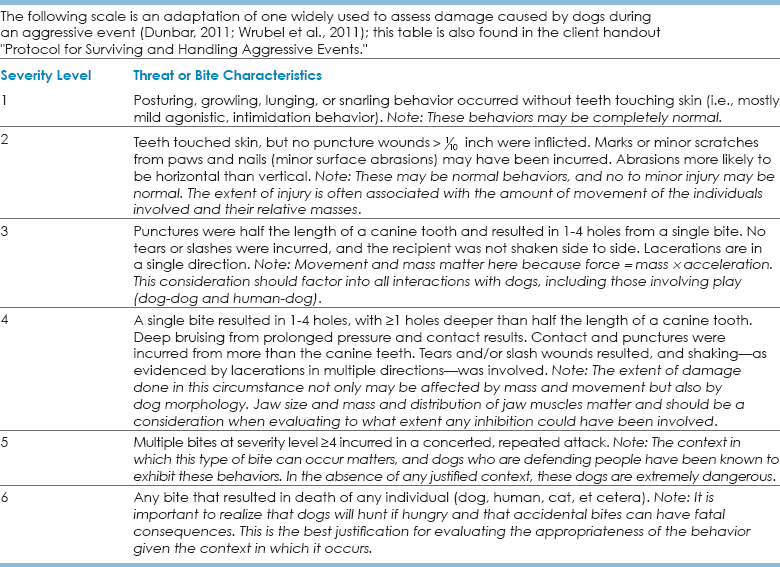
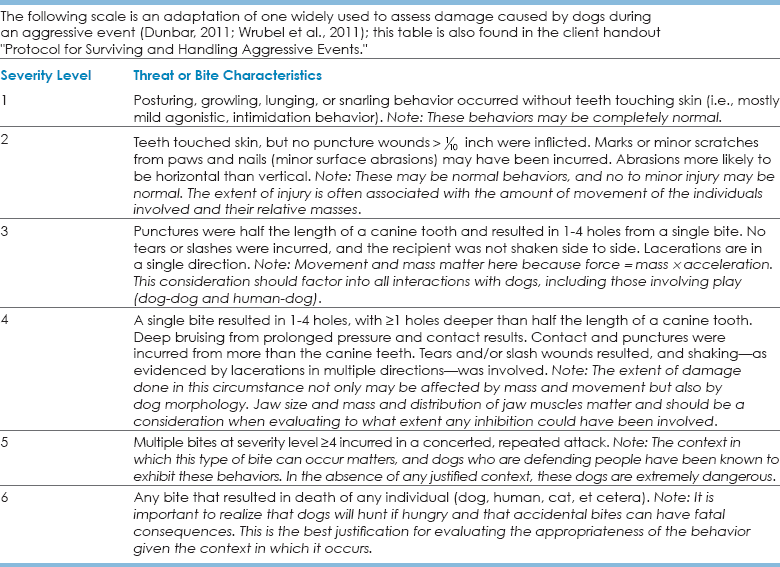
Canine Behavioral Pathologies
Maternal Aggression
Predatory Aggression Involving Dam and Pups
Play Aggression
 The dog can mouth only the toy.
The dog can mouth only the toy.
 At the first instance of any part of the dog connecting with the client’s arm, the game stops, and the client removes his or her attention from the dog.
At the first instance of any part of the dog connecting with the client’s arm, the game stops, and the client removes his or her attention from the dog.
 The dog must sit and be calm to start the game again.
The dog must sit and be calm to start the game again.
 The dog can relinquish the toy in exchange for another or for the request to “drop it.”
The dog can relinquish the toy in exchange for another or for the request to “drop it.”
 If the dog quits the game, that’s fine.
If the dog quits the game, that’s fine.
 If the client wishes to quit the game, the dog can be asked to sit and told he or she is brilliant. Whether the dog keeps the toy depends on whether she will destroy or ingest it.
If the client wishes to quit the game, the dog can be asked to sit and told he or she is brilliant. Whether the dog keeps the toy depends on whether she will destroy or ingest it.
 Some people (e.g., ill adults, older adults, young children) can be seriously injured if knocked over or grabbed by a dog.
Some people (e.g., ill adults, older adults, young children) can be seriously injured if knocked over or grabbed by a dog.
 If the dog wears a bell on a breakaway collar, warning will be given of his or her movement.
If the dog wears a bell on a breakaway collar, warning will be given of his or her movement.
 If the potential victims cannot use this warning, ensure that the dog is kept behind gates or doors when these people are present.
If the potential victims cannot use this warning, ensure that the dog is kept behind gates or doors when these people are present.
 These dogs need aerobic exercise outlets.
These dogs need aerobic exercise outlets.
 Leash walks are important because studies have shown that dogs prefer the household member who walks them (Mariti et al., 2013), but these walks are not usually aerobic.
Leash walks are important because studies have shown that dogs prefer the household member who walks them (Mariti et al., 2013), but these walks are not usually aerobic.
 Running (e.g., running after a Frisbee, running after a flyball, or running through deep snow), swimming, running on an underwater treadmill, and chasing other dogs all can help dogs reach their aerobic scope. Such exercise will help these dogs.
Running (e.g., running after a Frisbee, running after a flyball, or running through deep snow), swimming, running on an underwater treadmill, and chasing other dogs all can help dogs reach their aerobic scope. Such exercise will help these dogs.![]()
Stay updated, free articles. Join our Telegram channel

Full access? Get Clinical Tree



